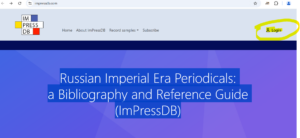
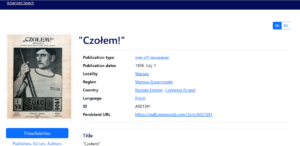


The UC Berkeley Library has started a trial of Piatidnevka Digital Archive. The trial will end on December 5, 2024. Please provide your feedback to your Librarian for Slavic, East European and Eurasian Studies at Lpendse at berkeley dot edu
The Piatidnevka Digital Archive is a valuable resource for researchers studying early Soviet history, particularly between 1929 and 1931. Published six times a month, this journal documents the Soviet Union’s brief experiment with a five-day workweek. The archive provides insight into the Soviet goal of replacing traditional societal norms with innovative approaches. It contains a wealth of visual and textual materials, including photographs, articles, editorials, and commentaries that offer firsthand perspectives on this significant period.
The trial can be accessed here.
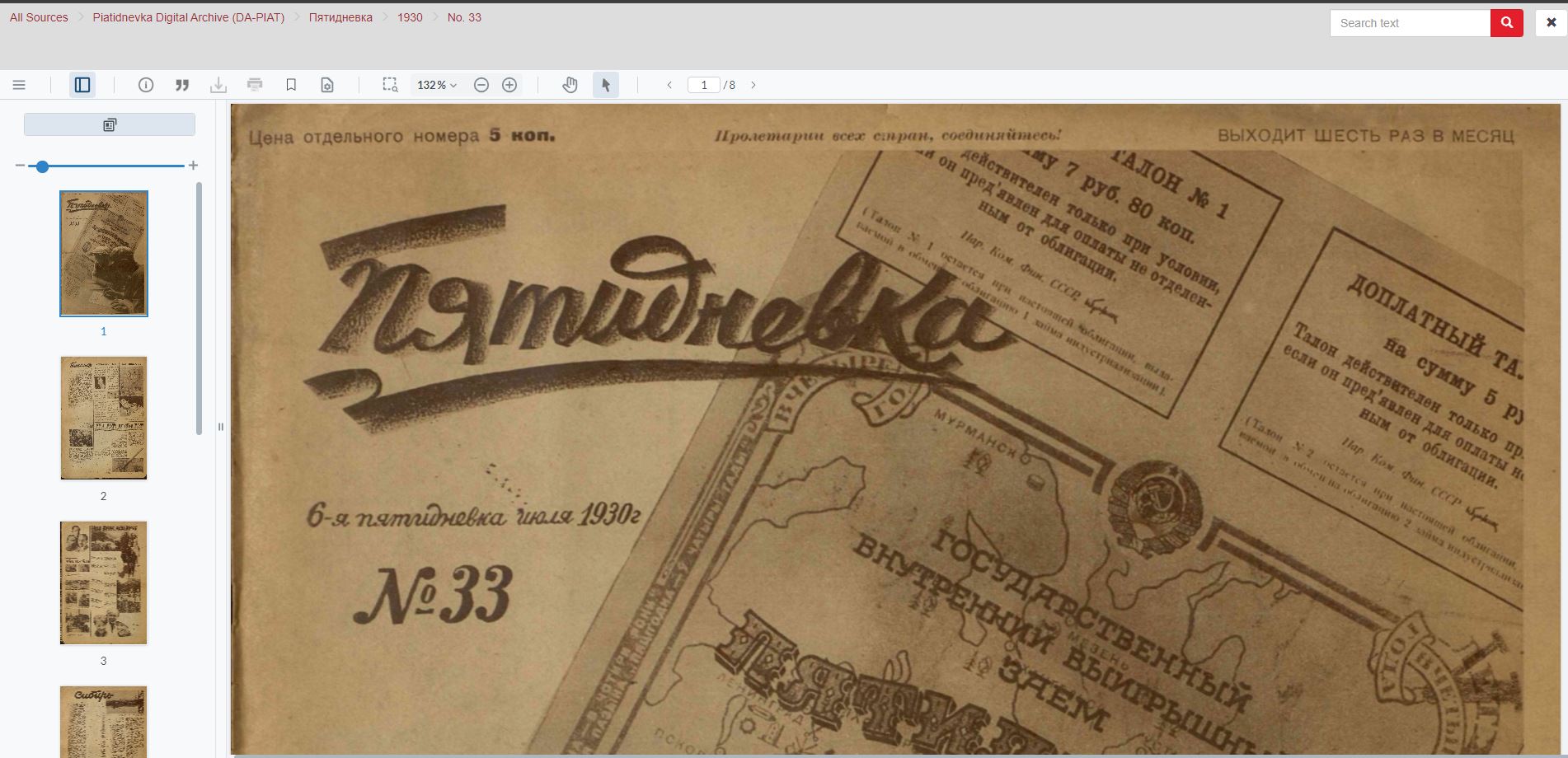
by Zachary Matsumoto
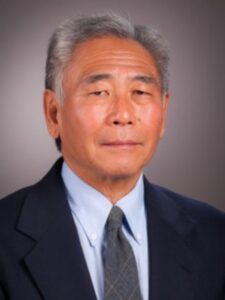
“My mom told me that an old deaf man, Mr. Wakasa, was walking his adopted stray dog around the perimeter of the camp,” recalled Patrick Hayashi. “His dog caught in the barbed wire fence and Mr. Wakasa went to save him and release him. The sentry ordered him to back away from the fence, but because he was deaf, he couldn’t do it, and so the sentry shot and killed him.”
This is the story of James Wakasa’s murder, which Patrick Hayashi’s mother told him when he was growing up. Wakasa was one of over 100,000 Japanese Americans incarcerated by the US government during World War II. In the incarceration camp of Topaz in the desert of central Utah, an armed US soldier shot and killed Wakasa. His death sparked outrage among Topaz’s incarcerees. Although individuals in the Japanese American community contest some of the details of Wakasa’s death, it remains a key, painful moment in the incarceration experience that Japanese Americans have passed down to their children.
The story of Wakasa’s death certainly remained an important memory for Hayashi, a Sansei—or third generation Japanese American—who was born in Topaz while his parents were unjustly imprisoned there. Hayashi discussed his life and career with the Oral History Center at UC Berkeley. His interview was conducted as part of the Japanese American Intergenerational Narratives Project, which explores trauma and healing across generations for Japanese Americans whose families were incarcerated during World War II.
As a young boy, after their release from the prison camp, Hayashi grew up with his parents in Hayward, California. His mother maintained ties to the Japanese American community, largely through church. However, when he was still young, Hayashi’s mother passed away of heart failure. This deeply saddened Hayashi’s father, who now carried the responsibility of raising a family as a single parent. Additionally, according to Hayashi, his father must have felt the guilt and shame from his incarceration experience in World War II. Nonetheless, Hayashi’s father exhibited resistance. He was a “no-no,” meaning he said “no” to two questions in an infamous loyalty questionnaire the US government forced upon the imprisoned Japanese Americans during WWII. The questions asked if one would be willing to serve in the US Army, and if one would swear loyalty to America and rescind loyalty to Japan. This sparked outrage among the Japanese American community, who were asked to serve a country that imprisoned them, and rescind a fealty to Japan that they didn’t have. Hayashi’s father’s “no, no” response was, as Hayashi believed, a “principled stand” against these unreasonable questions.
But his father never mentioned this resistance until Hayashi was an adult. Like many post war Japanese American families, Hayashi’s family did not often discuss their incarceration experiences.
Similar to his father, Hayashi also recalled feeling shame and guilt around incarceration and the war. In high school, he felt particularly ashamed of his identity when his class discussed WWII and the atomic bombs that destroyed Hiroshima and Nagasaki. At that time, Hayashi later recollected, “I was preferring not to be Japanese.” He also experienced a disconnect with the Japanese American community, largely due to his mother’s passing.Nevertheless, Hayashi shared many fond memories of his childhood, from reading Sherlock Holmes and science fiction books as an elementary schooler to becoming a star tennis athlete in high school.
If Hayashi felt shame due to his family incarceration, he channeled it into his work, starting in the 1960s. When reading his oral history, I noticed a theme of activism exhibited across his career in a near continuous fight for justice. After dropping out of college and working as a mail carrier, he found his calling in literature and became a UC Berkeley professor in the newfound Asian American Studies Department—one of the first such departments ever created. These developments for Hayashi came at the time of 1960s social movements in America. In one such movement, student protests in California universities led to the creation of an Ethnic Studies program at UC Berkeley.
Hayashi later became involved as a UC administrator, first working for Cal as the head of Student Conduct. After an investigation revealed that UC admissions were discriminating against Asian American applicants in the 1980s, Hayashi was appointed Associate Vice Chancellor of Admissions and Enrollment. In this position, and later as Associate President in the University of California, Hayashi worked on policy development and acted as an advocate for student applicants. He played a key role in fighting unfair admissions policies, such as the National Merit Scholarship Program (for discriminating against marginalized groups) and the Scholastic Aptitude Test or SAT (for not only explicitly favoring privileged students, but for also being, as Hayashi noted, a “bad test”).
One example of his advocacy came through at a meeting he attended soon after becoming Associate Vice Chancellor. In this meeting, Harold Doc Howe, Lyndon B. Johnson’s former Secretary of Education, communicated views with which Hayashi disagreed. Despite feeling nervous, Hayashi publicly challenged Howe in front of his colleagues. “My hands are actually trembling visibly in front of me and I said, ‘Howe begins with the assumption that a person’s writing ability reflects that person’s thinking ability. I don’t begin with that assumption. Instead I turn it into a question, and the question is to what extent does a person’s writing ability reflect that person’s ability to think?’ I said, ‘When you pose it as a question, the answer becomes obvious, it depends. If a person is new to the country or if the person is poor and has attended poor schools where the quality of education is low, then it’s incorrect and unfair to think that a person’s writing ability reflects that person’s thinking ability. Because oftentimes people just haven’t had the opportunity and the assistance to develop writing ability.’”
This, to me, demonstrates Hayashi’s sense of right and wrong – a fight against prejudiced assumptions in the admissions process.
Over time, too, Hayashi started to come to terms with the incarceration experience that his family hardly discussed and loomed over him like a cloud. One key moment for him occurred during his work as a UC professor. After reading James Baldwin’s Notes of a Native Son, in which Baldwin discusses his experiences with racism and understanding the good his overbearing father did, Hayashi felt a better understanding both of his own father and his emotions. According to Hayashi, “[Baldwin] helped me understand my rage. And how if you’ve been suppressed constantly by racism, that goes somewhere and then it explodes. That was my pattern, and then it made me realize that it must have been my father’s experience as well. He was a proud man, he was smart, but it was clear, the injustice was clear to him and so it must have gone somewhere.”
To me, Hayashi’s understanding of Baldwin speaks to the emotional scars of incarceration that burdened many Japanese Americans. After experiencing racist injustice during World War II, anger would seem like a reasonable response. Perhaps the silence of many Japanese Americans after the war was the product of the internal, bubbling anger that people of color have felt throughout American history.
As Hayashi continued to come to terms with his family’s incarceration experience, James Wakasa’s story reemerged as an important moment. In the late 1980s, Hayashi visited an art exhibition from the incarceration camps, filling him with emotion. He recalled, “I choked up more and more and then the fourth painting I saw was Chiura Obata’s sumi-E sketch of James Wakasa falling over after he was shot, and I started to sob. It was terribly embarrassing, but everyone around me was mainly Nisei, they were crying too. That’s when I started revisiting the camps in a systematic way.”
Hayashi held true to his word. Later in life, he became more and more involved in the memorialization of Topaz, the camp of his family’s imprisonment. After retirement from Cal, Hayashi played a role in the creation and work of the Topaz Museum, located near the site of the former incarceration camp. He taught workshops at the museum for teachers in Utah, served as the keynote speaker at a 2016 Day of Remembrance event, and interviewed the Topaz class of ‘45—high schoolers who graduated in 1945 as Topaz incarcerees. Hayashi also took up painting as a major passion and a creative expression of his identity.
Hayashi’s life story is a reminder that one does not need to be defined by internalized pain of the past, but can instead come to terms with that pain and tell its story. The interviews and life stories told throughout the Japanese American Intergenerational Narratives Oral History Project illuminate themes of memory, belonging, and healing. Hayashi’s life fully demonstrates each of these themes and serves as an inspiration for Japanese Americans pained by the past but who also want to make a difference.
To this day, he remains active in preserving the memory of incarceration. In 2016, Nancy Ukai, an activist who fought the auctioning of incarceration art, approached Hayashi with a request to create a painting for a Day of the Dead altar at a Japanese American cemetery. The request? To paint James Wakasa’s soul. His story, a source of intergenerational pain and important in Hayashi’s own life, now lay in the hands of Hayashi: a man who healed.
Patrick Hayashi’s oral history transcript is available on the OHC’s website.
Zachary Matsumoto is a sophomore at UC Berkeley currently studying History and participating as an Oral History Center URAP apprentice. He was drawn to the Oral History Center after attending a Bancroft Roundtable presentation about the Japanese American Intergenerational Narratives Oral History Project. American history is a current academic interest of his, including the histories of communities relating to his background as a Chinese and Japanese American. In his free time, Zachary likes to go for runs, watch sports, and play taiko.
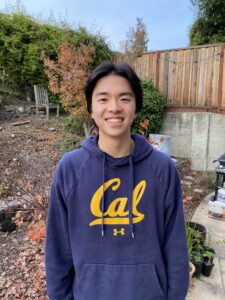
Zachary Matsumoto is a sophomore at UC Berkeley currently studying History and participating as an Oral History Center URAP apprentice. He was drawn to the Oral History Center after attending a Bancroft Roundtable presentation about the Japanese American Intergenerational Narratives Oral History Project. American history is a current academic interest of his, including the histories of communities relating to his background as a Chinese and Japanese American. In his free time, Zachary likes to go for runs, watch sports, and play taiko.
Reflections on Work with the Japanese American Intergenerational Narratives Project
by Zachary Matsumoto

This fall of 2023, I became a URAP student at the Oral History Center under the guidance of Shanna Farrell, Amanda Tewes, and Roger Eardley-Pryor. My work throughout this semester largely consisted of researching, analyzing, and writing about the oral histories of the Japanese American Intergenerational Narratives Project, as well as the Japanese American Confinement Sites Project. These oral histories highlighted a historical event that greatly affected my own family.
In 1942, the United States government, at the beginning of its involvement in World War II, issued Executive Order 9066. This order imprisoned Japanese Americans living on the West Coast and placed them in remote prison camps across the country. My paternal grandparents and their families were among them. Growing up, my parents told me of my grandparents’ histories as incarcerees, stressing the wrongdoing and unfairness done to them by the US government. As I grew up reading and watching material on Japanese American incarceration, I began to understand the details of the incarceration experience: how truly unfair it was; the crippling effects of losing a home for a remote prison camp; the silence of incarcerees afterward; and how themes of incarceration endure today.
Fast forward to 2023, when I joined the OHC as a URAP student and explored the oral histories of Japanese Americans. One component I learned from these oral histories was the traumatic intergenerational effects of incarceration: the pain and guilt that incarcerees passed down to their children, and at times even their grandchildren. This was a very eye-opening experience for me, as I personally felt as if the incarceration of Japanese Americans was an important, but almost distant historical event in my own life. Reading these oral histories, as well as listening to a podcast series “From Generation to Generation: The Legacy of Japanese American Incarceration,” based on the very same interviews, was at times an emotional experience. Hearing of descendants losing their sense of belonging, feeling disconnected with their culture, and living without the knowledge of their families’ incarceration experiences was heartbreaking to hear.
But what really struck me about these oral histories was not only the intergenerational pain and sorrow, but the agency exhibited by the project narrators after incarceration. This is something I knew but not really understood the scope of. This agency, as recounted in the oral histories, was both public and private. Patrick Hayashi, a man born in the incarceration camps and whose oral history I studied extensively, demonstrated activism as one of California’s first Asian American Studies professors and by fighting against prejudiced admissions practices. But more privately, he vowed to reexamine the trauma of his family’s past through creating artwork and educating Utah teachers on incarceration. Other individuals, in the 1970s and 1980s, participated in the redress movement, in which Japanese Americans questioned the wrongdoing of WWII incarceration and successfully drew attention to this experience. This eventually led to a formal apology and reparations paid by the US government.
Even in more recent years, the agency and activism of individuals in the oral history interviews shines brightly. Ruth Sasaki, an author, joined an organization named Tsuru for Solidarity: a group that fought against the forced incarceration of migrants crossing the US-Mexico border. After the Trump administration detained migrants at the US-Mexico border, including children, as part of the Zero Tolerance Policy, Sasaki and twenty-six other Tsuru for Solidarity members flew to Oklahoma to protest, along with a large number of Native American, Latino, and African American activists. Sasaki’s story, in particular, served as a reminder for me of the living memory of Japanese American incarceration and how that community in particular could serve as a key fighter: a guard against the unjust, unprovoked incarceration of marginalized groups today.
One moment of agency, in particular, was very personal for me and my interests. Roy Hirabayashi, a longtime San Jose resident and the descendant of Topaz survivors, recalled the founding of San Jose Taiko, a taiko (Japanese drumming) performance group. As San Jose Taiko began its performances and found its sound and style, Hirabayashi realized he did not know many traditional Japanese themes and rhythms for playing taiko; instead, he took rhythmic inspiration from music he was exposed to in the Bay Area, such as R&B and Latin soul. According to Hirabayashi, “We felt we were establishing pretty much early on that we, in Asian American sound, using what we called the Japanese drum, the taiko, our version.” For Hirabayashi, taiko was not just a performance instrument but an intentional expression of his developing Asian American identity. This, to me, shows his agency and sense of self. Reading Hirabayashi’s oral history also highlighted my personal connection to this interview. As a child, my mom drove me forty minutes to Santa Rosa so I could learn and practice taiko. Now, as a sophomore in college, I am a current member of Cal Raijin Taiko, UC Berkeley’s taiko organization and performance group. The fact that an instrument that occupies an important place in my own life is wrapped in the history and agency of Japanese Americans captivates me and brings me closer to the history of the Japanese American experience.
Over the course of my URAP experience in the Oral History Center, I felt my eyes further opened to the individual experiences of the descendants of incarcerees. What stands out was not just their guilt and attempts to cope with the scars of incarceration, but instead their strength through identity and activism. As a Japanese American myself, I feel proud to be part of this legacy of strength. In the future, I hope to continue exploring my identity, and what it means to be a descendant of the incarceration camps. As I explored the oral histories in the Japanese American Intergenerational Narratives Project, I encountered personal questions: why am I not feeling the same burden as the descendants of incarceration? Why do I feel as if incarceration was a memory without a strong effect on my own life? These questions remain in my mind, and I will continue to seek answers to them throughout my life.
The Library has purchased the Digital Archive of a Soviet film magazine: Sovetskii Ekran. The archive provides access to the full-text of journal issues that were published from 1925-1998.
Below is the screenshot of the landing page of the Sovietskii Ekran.

At the time of writing this blog, the digitization of issues was completed through 1970 and the additional digitization was in progress.
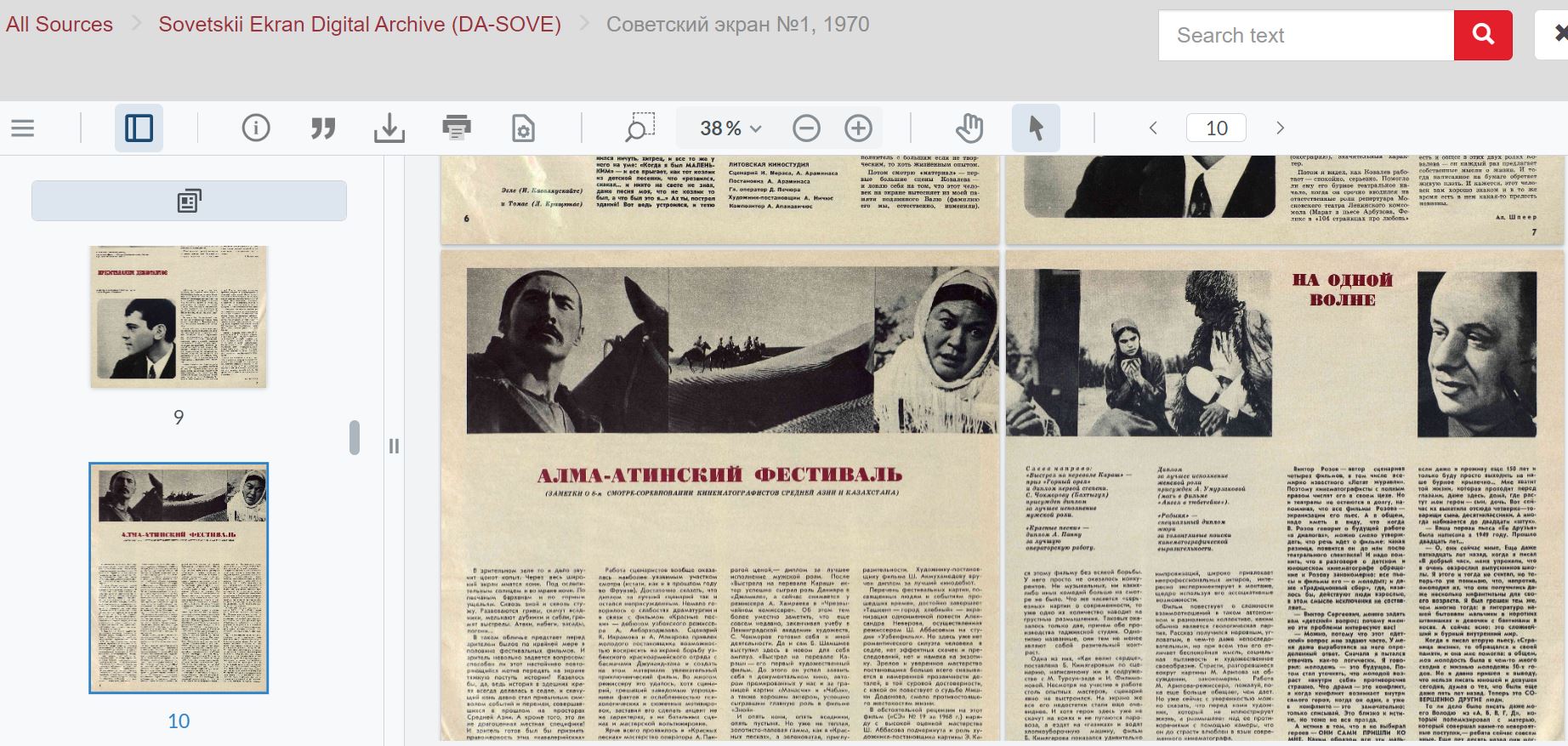
About the journal:
Soviet Screen was a magazine in the USSR that ran from 1925 to 1998 (with a break from 1941 to 1957). It talked about movies, both from the Soviet Union and other countries, cinema history, and had articles critiquing films. They also had reader polls each year to pick the best film, actor, actress, film for children, and music film.
The magazine had different names over the years, like Screen Film Gazeta in 1925, Cinema and Life in 1929–1930, Proletarian Cinema from 1931–1939, and Screen from 1991–1997. Before 1992, it was connected to the Union of Cinematographers of the USSR State Committee for Cinematography and the USSR.
In 1984, they printed 1.9 million copies. In 1991, the editor was Victor Dyomin, and the magazine was published under the title: Screen. It started coming out less often, monthly instead of more frequently. It kept going as Screen Magazine until 1997, then for a few months in 1997-1998, it went back to its old name-Soviet Screen. But it couldn’t survive the financial troubles in 1998 and had to stop publishing (Source: Wikip.).
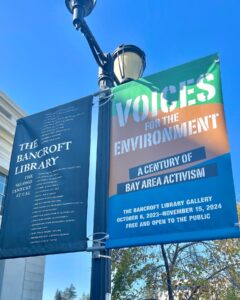
We’re excited to announce the opening of Voices for the Environment: A Century of Bay Area Activism, a Bancroft Library Gallery exhibition that was curated by Todd Holmes, Roger Eardley-Pryor, and Paul Burnett of the Oral History Center. Voices for the Environment traces the evolution of environmentalism in the San Francisco Bay Area across the twentieth century. In three sections, it highlights how Bay Area activists have long been on the front lines of environmental change—from efforts to preserve natural spaces in the wake of the 1906 San Francisco earthquake and fire, to the midcentury fight for state regulations to protect San Francisco Bay shoreline, to more recent demands for environmental justice to address the disproportionate burden of pollution that sickened communities of color around the Bay.
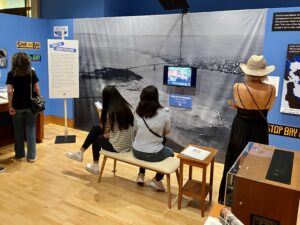
Our Voices for the Environment exhibit is the first major effort in The Bancroft Library Gallery to showcase oral history alongside the traditional archival collections of The Bancroft Library, with the oral history collections leading the way. The exhibit still features historic photographs, pamphlets, post cards, and posters selected from several collections of The Bancroft’s physical archives. But for the first time in this gallery, our Voices for the Environment exhibit also includes three installations of special Audio Spotlight technology where you can listen to never-before-heard oral history recordings with Bay Area environmentalists, while simultaneously watching three videos edited by Todd Holmes that feature historic photographs and rare film footage from The Bancroft’s digital collections. Additionally, as a complement to the exhibit, curators Todd Holmes and Roger Eardley-Pryor created an educational workbook, so students of all ages can learn about the environmental movement by engaging with the themes and primary sources on display. Through these efforts, the Oral History Center hopes Voices for the Environment will have a life beyond its yearlong run.
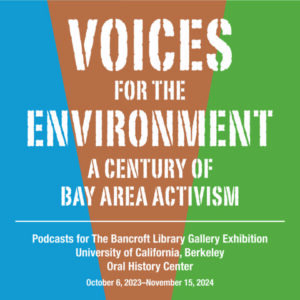
For an even deeper dive, you can also scan a QR code in the gallery, or click the following link, to hear three Voices for the Environment podcast episodes produced in partnership with Sasha Khokha of KQED Public Radio and The California Report Magazine. The podcast episode for section 1 of the exhibit, titled “A Preservationist Spirit,” traces the environmental activism that arose amid the rebuilding efforts of San Francisco after the 1906 earthquake and fire, efforts that came to target the state’s ancient redwood forests and the beloved Hetch Hetchy Valley in Yosemite National Park. The episode features historic interviews from the Oral History Center archives including segments from the “Growing Up in the Cities” collection recorded in the late 1970s by Frederick M. Wirt, as well as oral history interviews with Carolyn Merchant recorded in 2022, with Ansel Adams recorded in the mid-1970s, and with David Brower recorded in the mid-1970s. The oral history of William E. Colby from 1953 was voiced by Anders Hauge, and the oral history of Francis Farquhar from 1958 was voiced by Ross Bradford. This first episode also features audio from the film Two Yosemites, directed and narrated by David Brower in 1955. The podcast episode for section 2 of the exhibit, titled “Tides of Conservation,” tells the story of the Save San Francisco Bay movement and the creation of the San Francisco Bay Conservation and Development Commission (BCDC), one the nation’s first environmental regulatory agencies. The episode features segments from oral history interviews with Save The Bay founders Esther Gulick, Catherine “Kay” Kerr, and Sylvia McLaughlin recorded in 1985; as well as interviews with BCDC executive director Joseph Bodovitz and chairman Melvin B. Lane, both recorded in 1984. And the podcast episode for section 3 of the exhibit, titled “Environmental Justice for All,” spotlights efforts by communities of color to place the health of people within the environmental agenda, including creation of new environmental organizations like the West County Toxics Coalition, the Urban Habitat Program, and APEN (Asian Pacific Environmental Network), all founded in the Bay Area. The episode features segments from oral history interviews with Carl Anthony, Pamela Tau Lee, Henry Clark, and Ahmadia Thomas, all recorded in 1999 and 2000.
The Voices for the Environment exhibition space was designed by Gordon Chun and is free and open to the public Monday through Friday between 10am to 4pm from Oct. 6, 2023 to Nov. 15, 2024, in The Bancroft Library Gallery, located just inside the east entrance of The Bancroft Library.
We hope you come to campus and experience it!
The Oral History Center of The Bancroft Library preserves voices of people from all walks of life, with varying political perspectives, national origins, and ethnic backgrounds. We are committed to open access and our oral histories and interpretive materials are available online at no cost to scholars and the public. You can find our oral histories from the search feature on our home page. Search by name, keyword, and several other criteria. Sign up for our monthly newsletter featuring think pieces, new releases, podcasts, Q&As, and everything oral history. Access the most recent articles from our home page or go straight to our blog home.
Please consider making a tax-deductible donation to the Oral History Center if you’d like to see more work like this conducted and made freely available online. While we receive modest institutional support, we are a predominantly self-funded research unit of The Bancroft Library. We must raise the funds to cover the cost of all the work we do, including each oral history. You can give online, or contact us at ohc@berkeley.edu for more information about our funding needs for present and future projects.
Oxford University Studies in the Englightenment Online is made up of two monograph series: Studies on Voltaire and the Eighteenth Century (SVEC) (first published in 1955) and Oxford University Studies in the Enlightenment (955-2016). The collection of 572 volumes provides a broad overview of a variety of subjects relating to the Enlightenment including: history, cultural studies, literature, biography, religious studies, philosophy, and gender studies.
From the Archives
By Adam Hagen
UC Berkeley’s Oral History Center houses a number of oral histories that center the lives of Mexican American activists. One such history, Burning Light: Action and Organizing in the Mexican Community in California, contains the recorded speeches and interviews of Ernesto Galarza from the late 1950s through the early 1980s, and provides a glimpse into the life of a man whose commitment to the Mexican American agricultural workers of California never wavered, even when he found himself a continent apart from them.
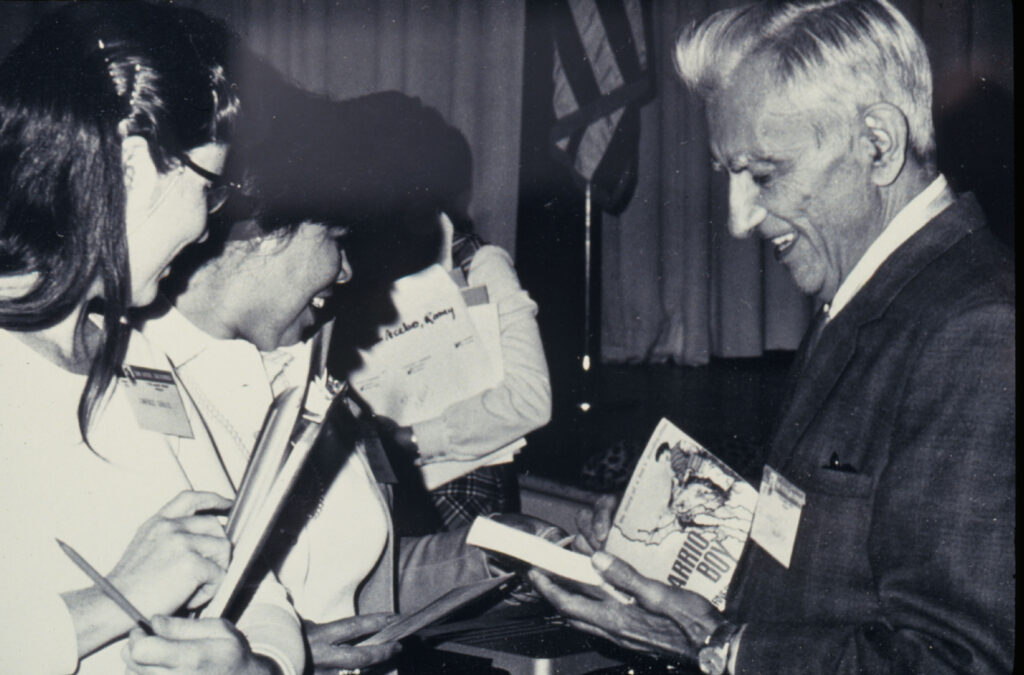
Galarza’s words, which he imbues with a certain dry poetry, recount a life of extraordinary experience and achievement: Galarza worked as an organizer with the United Farm Workers of America, where he was instrumental in bringing the bracero program to an end; as an educator at the elementary and collegiate levels; and for a time as the chairman of the development of bilingual educational material for the National Committee of Classroom Teachers. He also worked as a consultant for several organizations and institutions, including the government of Bolivia. A recurring theme in Galarza’s oral history, and the subject of this profile, is his efforts on behalf of bilingual education and Spanish literacy advancement in the Mexican American community.
Galarza was born in the village of Jalcocotán in the Mexican state of Nayarit in 1905. But fleeing the tumult of Francisco Madero’s revolution, he and his family came to Sacramento in 1911, when the Central Valley’s patchwork of farm property was not yet its present expanse and its limits did not so easily elude the eye. There, enveloped in a community of agricultural laborers in the Sacramento barrio, a young Galarza would see firsthand the struggles of Mexican Americans and braceros as they tried to navigate the foreign land in which they now found themselves. And, as his family was of modest means—exacerbated by his mother’s death in 1917—he too joined in this work from an early age. One of the recorded talks compiled in the oral history contains a poignant allusion to his communities’ challenges in adapting to life in the United States, and, as it deals with the matter of English language acquisition, reveals the seeds of his future work. In the talk, Galarza recalls that he “became a leader in the Mexican community at the age of eight for the simple reason that I knew perhaps two dozen words of English.”
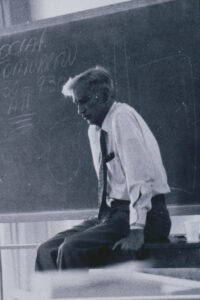
English proficiency, however, was only one of a number of skills that Galarza exhibited in his youth. His academic prowess was so apparent that Sacramento High School teacher Ralph Everett approached him personally and asked that he reconsider his plan to work at the Sacramento Libby, McNeill & Libby cannery after graduation, insisting that he attend college instead. Everett even went to great lengths to help Galarza gain admission to Occidental College in Los Angeles, the institution he would graduate from in 1927. After Occidental, Galarza would go on to earn a master’s degree in history from Stanford University in 1929 and a doctorate in sociology from Columbia University in 1944.
Galarza’s recollection of his time at these institutions reveals how rare it was for a “Mexicano” to have the opportunity to obtain a higher education in the early twentieth century. He had this to say at a talk for Chicano studies students at UC Berkeley in 1977:
The Chicano students that I knew in the thirties at Columbia and elsewhere were very few in number. At Columbia University I didn’t know another graduate student in the department of history or political science or public law, which is where I did my work. Neither were there many of us in the undergraduate institutions in Southern California where I went to college at Occidental. I remember, I think it was in 1925, out of sheer curiosity I inquired among my friends at UCLA, USC, Pomona, Whittier and all of that cluster of colleges in the south, and I could only identify six of us in all of those places. Of course, possibly that wasn’t a good count because even then there were some Chicanos who had already given up their identity. They had become anything but Mexicans. In those days, we didn’t talk about Chicanos. You were either a Mexicano or you were not.
His skills in English and consequent academic achievements were a relative anomaly among the bracero and Mexican American communities due to there being a dearth of bilingual and English language education resources at the time of his youth. According to Galarza, not until the latter half of the twentieth century did the federal government take the concept of bilingual education and English as a second language (ESL) education seriously and fund it in any substantial fashion. And, as he notes in his oral history, once funding did increase there remained a system that overlooked the intricacies of bilingual education; advisory committees in Washington attempted to regulate the bilingual and ESL instruction from afar, and their distance resulted in curriculum that was incongruent with students’ needs.
Concerned about this oversight, Galarza explains that he and other instructors working in bilingual education were actively challenging the Department of Health, Education and Welfare and the Office of Bilingual Education in the 1970s, and had begun to see success. As he says in the oral history, he felt their work “has been so effective, even modest as it is, that it has created waves that have become very ominous to them.”
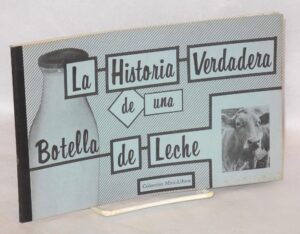
And beyond his pushing for better, more personalized bilingual education curriculum on an institutional level, Galarza—believing that Spanish literacy had to precede English instruction—took it upon himself to craft and publish what he called “Mini-Libros,” easy-to-read Spanish texts that he designed for use in the classroom and hoped would engage young readers. So as to make students as comfortable as possible, the Mini-Libros even contained vocabulary specific to Mexico and the working-class immigrants coming to the United States at the time.
These actions were especially timely because Mexican immigration into the US was greatly increasing in the 1960s and ’70s, a topic thoroughly discussed in the interview. Galarza recognized the wealth of challenges—from housing to employment to education—that came with incorporating such a massive population into the fabric of American society, and identified the issues of literacy and English proficiency as those he was most eager to help resolve.
Each summer in his undergraduate years Galarzo would return to Sacramento to do what he called “bread and butter work” in the farms and the cannery. Later, when he left California to study at Columbia and the path home was no longer so easily negotiated, his community’s want of literacy became a major concern, in part his due to its personal impact:
I began to be disturbed by the lack of news from home. My family and my friends back in Sacramento were not writers. They didn’t know, many of them, how to write…When I realized after my third or fourth year back in the East that this was happening to me, I became very disturbed. And while we stayed in the East another six years, that feeling never left me that what was happening back in California in all the towns that I knew and where I had worked, I was not keeping abreast of.
Galarza believed that the Mexican immigrant children coming into the school system in the mid-twentieth century had to be brought into the fold of American life, to be “acculturated,” in his words, so as to avoid the fate of his own family and community. And such acculturation could not begin with a hard-and-fast imposition of English instruction, something he believed would only further alienate the newly arrived immigrants, accelerate the creation of insular communities, and complicate their path to prosperity in the US. He viewed bilingual education as the obvious answer to this challenge. It would help a child, as he noted in his oral history, to “recognize—to get into—and become familiar with this strange environment into which he’s been dropped.”
Galarza’s oral history is an invaluable glimpse into the subtle divides of his time: for each acknowledgement of how badly the “American hosts” have treated Mexican Americans, he has another remark on the myopia of Mexican American activists due to their protests against acculturation—something he believed was “largely for the purposes of propaganda.” And beyond these commentaries, he proves to be equally invaluable as a representation of a steadfast activism that lacks glamour and prefers actions to words. Galarza identified the challenges of his time and repeatedly asked the central question: what to do about it?
Find this interview and all our oral histories from the search feature on our home page. You can search by name, keyword, and several other criteria.
Adam Hagen recently graduated UC Berkeley with majors in Spanish linguistics and history. Adam worked as a student editor for the Oral History Center and was also a member of the editing staff of Clio’s Scroll, the Berkeley Undergraduate History Journal.
The Bancroft Library has more than thirty holdings by Ernesto Galarza, including poems, books, reports, pamphlets, conference proceedings, and audio of talks and panel discussions. From the UC Library Search, go to “Advanced Search,” select “UC Berkeley special collections and archives,” and in the search field, enter Ernesto Galarza.
The Chicana/o Studies Oral History Project provides a rare, firsthand look at the development of the field of Chicana/o studies over the last fifty years, as well as unique insight into the lives and careers of the pioneering scholars who shaped it.
The Oral History Center digital collection contains additional oral histories of Mexican American activists, such as Hope Mendoza Schechter and Herman E. Gallegos. More can be found by searching “Mexican American community” or “Mexican American activism” on the Oral History Center home page.
Ernesto Galarza’s oral history is part of the Oral History Center’s Advocacy and Philanthropy—Individual Interviews collection. Read more about the collection in the article by Lauren Sheehan-Clark, “Helping Hands: A Guide to the Oral History Center’s Advocacy and Philanthropy Individual Interviews.”
The Oral History Center of The Bancroft Library preserves voices of people from all walks of life, with varying perspectives, experiences, pursuits, and backgrounds. We are committed to open access and our oral histories and interpretive materials are available online at no cost to scholars and the public. You can find our oral histories from the search feature on our home page. Search by name, keyword, and several other criteria. Sign up for our monthly newsletter featuring think pieces, new releases, podcasts, Q&As, and everything oral history. Access the most recent articles from our home page or go straight to our blog home.
“I was just one of thousands of people over the years who have done the little things necessary to create and to pass on personal narratives of the past.” —Mollie Appel-Turner
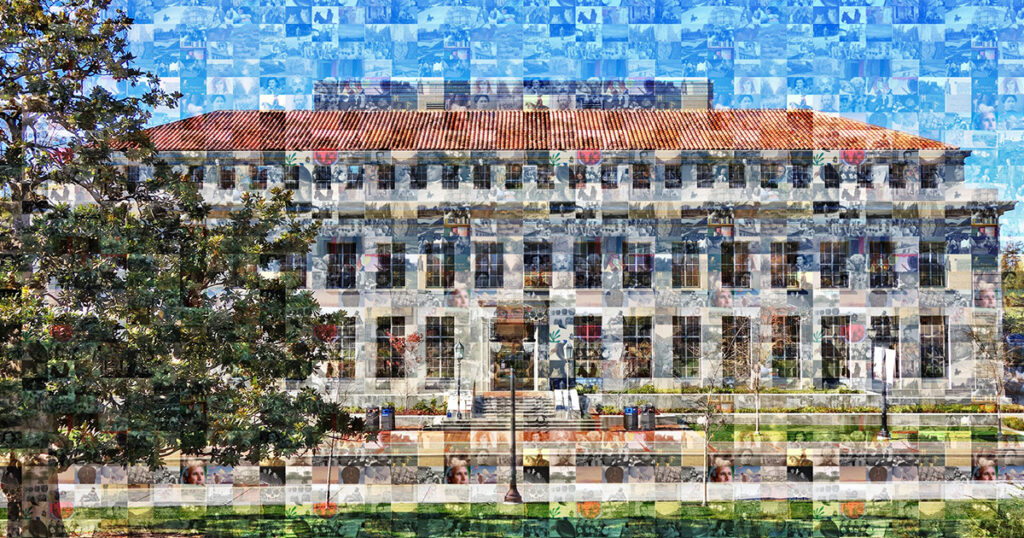
by Serena Ingalls, class of 2023
Like many of my student co-workers at the Oral History Center (OHC), I have recently graduated from UC Berkeley. Graduation from college is a major milestone, and I find myself looking back at all of my different experiences at Cal: classes, clubs, the pandemic, and my job as a student editor and researcher at the Oral History Center. My job in oral history in particular is a point of contemplation, as I’ve spent many hours in this role and it’s a unique experience that only a handful of other students can relate to. I find myself wondering, how has this job impacted me and my view of the world? How has my work in this role contributed to the field of history?
Before closing the UC Berkeley chapter in our lives and moving on to other post-grad interests, we as the student editors took the time to reflect upon our work at the Oral History Center and what it means to us. We hope that you’ll enjoy stepping into our world as student editors in oral history, just as we have enjoyed the experience of getting to know the many fascinating individuals in our oral history archive.
Editor’s note: Our team’s student editors serve critical functions in our oral history production, analyzing entire transcripts to write discursive tables of contents, entering interviewee comments, editing front matter, writing abstracts, and more. They do the work of professional editors and we would not be able to keep up our pace of interviews without them.
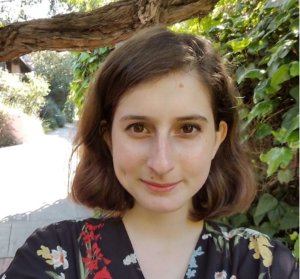
Working for the Oral History Center of The Bancroft Library while pursuing a history degree was both deeply rewarding and extremely unfamiliar. My area of interest when it comes to history has always been western medieval Europe. While there are plenty of sources from the era where people recount their life experiences, I always had an awareness of the massive separation—temporal, cultural, and physical—between myself and the speaker. At the Oral History Center, I was keenly aware that the work that I was doing on oral histories was with the ultimate goal of preserving knowledge for future generations. But for the time being, that gulf I was used to, which to me practically defined the work I did as history, was simply not present. In my time outside of work, I also spent a fair chunk of time reading people’s personal accounts. While these accounts differed in many ways from the oral histories that I worked on, as time passed, I came to see these different kinds of personal accounts as reflections of one another. I would frequently stop in the middle of my shift, cursor blinking next to a spelling error, and think about how I was just one of thousands of people over the years who have done the little things necessary to create and to pass on personal narratives of the past. The immediacy, and modernity of the accounts that I worked on at the Oral History Center, rather than widening the distance I felt between me and the medieval people I studied, made me feel closer to them in a way that I did not expect.
Mollie Appel-Turner joined the UC Berkeley Oral History Center as a student editor in fall 2021. She recently graduated with a degree in history with a concentration in medieval history.
In my time at the Oral History Center, I have worked on and witnessed the publication of interviews from an innumerable variety of narrators, including artists, writers, curators, academics, conservationists, and otherwise “ordinary” people with extraordinary stories to tell. I recall the first oral history I worked on upon joining the Center: Thomas Gaehtgens, former director of the Getty Research Institute, whose interview was not only incredibly detailed but also quite interesting to read. More recently, I have helped edit interviews from the Chicana/o Studies Oral History Project, the Japanese American Intergenerational Narratives Oral History Project, and the California State Archives State Government Oral History Program.
As a member of the OHC’s editorial team, most of my work is behind the scenes and prior to publication. I see these interviews at almost every stage in production. By the time an oral history transcript is finalized, I have generally read through it in its entirety several times and am quite familiar with the contents; as such, I interact with oral history at multiple levels. This experience has ultimately helped form and maintain my view of oral history as an inherently dynamic, interactive record—a form of living history.
The final oral history is a labor of many people to produce, with several rounds of edits and review that heavily draw from the narrator’s own input, and as such possesses a strong sense of the narrator’s personal style: how they speak, what they consider important or even essential for understanding their stories, their sense of humor, and what elements of the initial oral interview they would prefer to keep private.
The result is a distinctively humanizing portrayal of the narrator that arises from the nature of oral history as a lightly edited, audio-based interview format. The reliance on the “oral” aspect of oral history means that, bar serious editing, the published transcripts of interviews from the OHC tend to preserve a great deal of the tone of the original audio recording, including quirks of speech unique to each narrator. My personal favorite detail is always the bracketed notes included by the transcriber to indicate when someone is laughing, a phenomenon that often accompanies the conversation between interviewer and narrator and, in my opinion, highlights the deeply personal nature of these interviews.
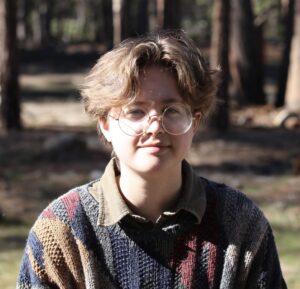
By sheer virtue of the volume of in-progress oral histories I interact with, I find that in time they become almost a part of you—there are so many narrators whose words and stories I remember, and whose work I have actively sought out after encountering their oral histories. For example, I became interested in Bay Area arts institutions after reading the interview of a San Francisco Opera board member; my own undergraduate research has been informed in no small part by border theory, a concept I was first introduced to by the narrators of the Chicana/o Studies Oral History Project; and my work on the oral histories of California politicians has contributed to my awareness of the history of the state’s politics. Oral history is intimate and alive, and its existence has the unique ability to inform and inspire those who engage with it.
Shannon White is a recent UC Berkeley graduate in the Department of Ancient Greek and Roman Studies. They were an undergraduate research apprentice in the Nemea Center under Dr. Kim Shelton and a member of the editing staff for the Berkeley Undergraduate Journal of Classics. Shannon worked as an editorial assistant for the Oral History Center.
Before working at the Oral History Center as a student editorial and research assistant, my interactions with oral history were limited. As a history major, it was a topic occasionally mentioned in my classes at Cal. I could understand the value in oral history as a way of filling in gaps in the historical record and giving a voice to those who were excluded from the written record. After I began my work with the OHC, however, I gained a new appreciation for oral history. This change in perspective came after seeing firsthand the immense effort that goes into producing oral histories to be shared with the public, and from reading the oral histories in our archive.
At the Oral History Center, I’ve worked in two roles. One of my roles is as a research assistant. In order to promote our archive and share our interviews with the public, we post on social media about relevant historical anniversaries (25th, 50th, 75th, 100th). I research these anniversaries and then search the archive to see if we have content that references these historical events. It’s surprising how many specific events are mentioned by interviewees, so I never discount an event without checking first with the archive. If there is one event that is very historically significant and has several interviews that reference it, sometimes I’ll write an article on the subject for the OHC. My other role is as an editorial assistant. Editorial assistants are part of the process of readying an oral history for publication. Student editorial assistants have a range of responsibilities during the editorial process which include inputting corrections from narrators, writing the table of contents, and more. Editing the oral history is a collaborative process, and it can take months or even years before an oral history is fully ready for publication. Once an oral history is completed and shared with the public, all who have worked on a particular oral history know the narrator inside and out.
The OHC has an enormous archive of interviews with narrators who have incredible insight on the history of California and beyond. Their voices provide knowledge, but more critically, they add life to these historical periods. The interviews are at times surprising, heartbreaking, and even funny, and no two interviewees have the same story. Each interview is a unique combination of the mundane and the extraordinary, just like the life of any person.
“Each interview is a unique combination of the mundane and the extraordinary, just like the life of any person.” —Serena Ingalls
Serena Ingalls recently graduated UC Berkeley with majors in history and French. She is an editorial and research assistant for the Oral History Center. Serena came up with the idea for an article about what it’s like to work on oral histories when she worked on an article about the seventy-fifth anniversary of the tape recorder.
A few short months ago, I graduated from UC Berkeley. I have completed 12 political science courses; written dozens of sports articles for Berkeley’s independent student newspaper, The Daily Californian; struggled my way through one too many required science classes; and penned more than a few essays en route to a minor in history.
As a journalist and student, determining and advancing truth was at the heart of everything I did. For example, in order to make a sound political science argument about the role of agency in a democracy, I could not reinvent what Harriet Jacobs wrote in her autobiography, Incidents in the Life of a Slave Girl. Desiderius Erasmus had something specific to say about tyranny. What was it, exactly? Did Cal’s football team run or pass the ball more often on third down? If the United States federal government really did assume a different position towards organized labor after World War II, what evidence supports that claim?
The answers to my own questions, or the questions my professors asked of me, had to be completely truthful. I certainly couldn’t say that I didn’t have an answer to an essay prompt.
Oral history is a little bit different. When I first began working here last year, I couldn’t help but be skeptical. An interviewee in her eighties cannot with absolute accuracy remember her childhood years during the Great Depression, or her immediate reaction to the assassination of President Kennedy. Memory fails people all the time. A story might be true on the whole, I thought to myself, but the details might not. And what use was the answer “I don’t know?” That might be the truth, but what good is an oral history in which there are gaps?
In short, how could a researcher possibly find use in an incomplete, possibly inaccurate story told by someone fifty years after the fact?
Of course, these questions are not on my mind as I write a table of contents or fix formatting issues on a transcript. My work can be tedious at times. As someone whose mind likes to stay busy, I don’t mind. But every now and then I will stop and think critically about what I’m reading and how it relates to my role as a student, journalist, and assistant at the Oral History Center; namely, promoting truth.
I soon came to terms with the fact that oral histories cannot be totally accurate and that in an important way they are true. While the historian attempts to explain how people in the past saw themselves, their situation or others in very broad terms, the oral history provides insight into how a creator of history currently thinks of her past self, a valuable perspective for social scientists of all stripes. An interviewee might have felt more anxious than nervous at a certain moment in history, but how he remembers the past is also an important part of history. What good is there in knowing the true happenings if we do not know how the living, breathing makers of history think about what happened?
And for that reason, I have come to realize that oral history isn’t impure, or less true. I do still read the oral histories I work on with a wary eye. But I don’t worry about their truthfulness like I first did back in the spring of 2022. Instead, each time I complete my portion of a project, I feel a sense of gratification for having helped keep history alive. Because true history is not a fixed thing. It lives in the minds of everyone who has experienced it.
William Cooke recently graduated UC Berkeley with a major in political science and minor in history. In addition to working as a student editor for the Oral History Center, he is a reporter in the Sports department at UC Berkeley’s independent student newspaper, The Daily Californian.
Serena Ingalls, Saving the Spoken Word: Audio Recording Devices in Oral History
Mollie Appel-Turner, Shirley Chisholm, Women Political Leaders, and the Oral History Center collection
William Cooke, Title IX in Practice: How Title IX Affected Women’s Athletics at UC Berkeley and Beyond and Heavy hitters: the modern era of athletics management at UC Berkeley
Shannon White, “I take this obligation freely:” Recalling UC Berkeley’s loyalty oath controversy
Jill Schlessinger, editor, A peaceful silence: Berkeley undergrads reflect on remote employment during the pandemic
The Oral History Center of The Bancroft Library preserves voices of people from all walks of life, with varying perspectives, experiences, pursuits, and backgrounds. We are committed to open access and our oral histories and interpretive materials are available online at no cost to scholars and the public. You can find our oral histories from the search feature on our home page. Search by name, keyword, and several other criteria. Sign up for our monthly newsletter featuring think pieces, new releases, podcasts, Q&As, and everything oral history. Access the most recent articles from our home page or go straight to our blog home.
A recent acquisition, Testaments to the Holocaust, Dococuments and Rare Printed Materials from the Weiner Library, London, provides access to the “first archive to collect evidence from the Holocaust and the anti-semitic activities of the German Nazi party. It contains documentary evidence collected in several different programmes: the eyewitness accounts which were collected before, during and after the Second World War, from people fleeing the Nazi oppression, a large collection of photographs of pre-war Jewish life, the activities of the Nazis, and the ghettoes and camps, a collection of postcards of synagogues in Germany and eastern Europe, most since destroyed, a unique collection of Nazi propaganda publications including a large collection of ‘educational’ children’s’ books, and the card index of biographical details of prominent figures in Nazi Germany, many with portrait photographs. Pamphlets, bulletins and journals published by the Wiener Library to record and disseminate the research of the Institute are also included. 75% of the content is written in German.”